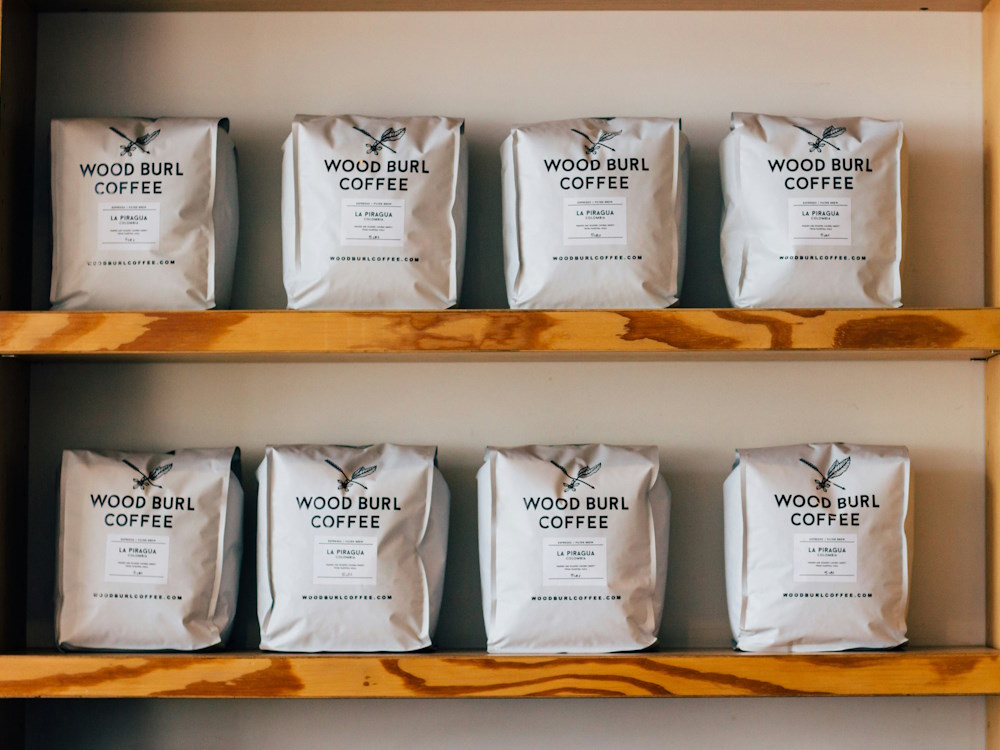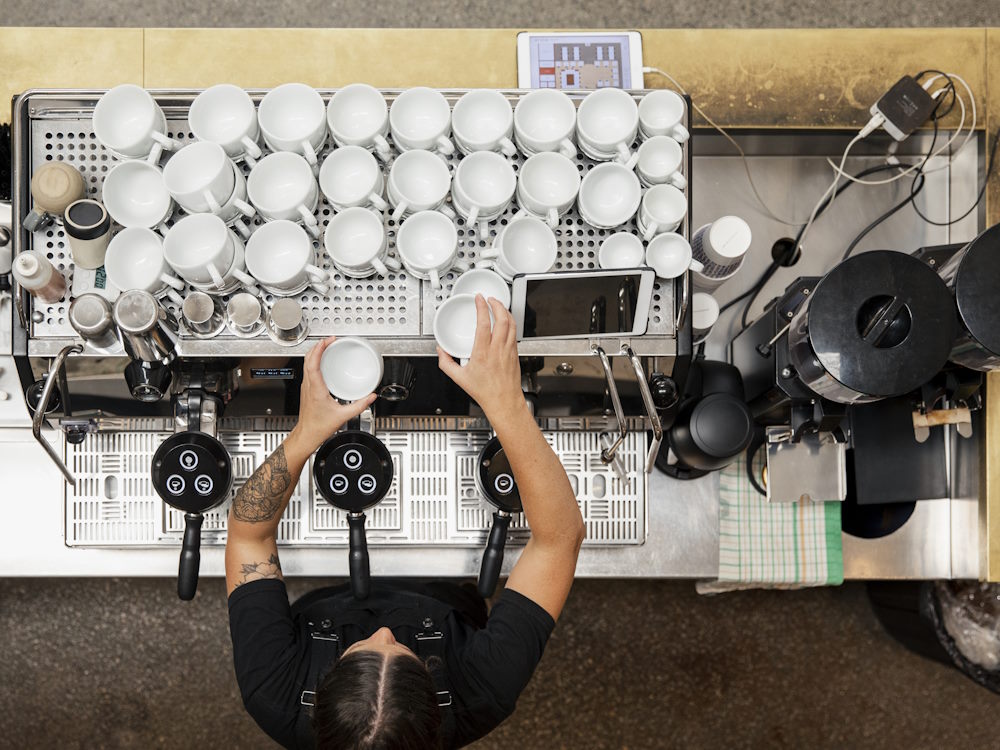This year has been particularly eventful for the coffee industry, especially for roasters. Marked by the impending European Union deforestation regulation, persistent market volatility, historic coffee prices, and increasing business costs, 2024 has been challenging, to say the least.
Many roasters have found themselves at a crossroads as they face these hurdles, forced to make strategic decisions and adapt in new ways. For some, pivoting towards blends and lower-point single origins has been the go-to option, while others have diversified into the ready-to-drink (RTD) market to tap into a new consumer base.
As we approach the end of the year, it’s clear that market volatility isn’t going to slow down any time soon, meaning many of the unprecedented challenges experienced in 2024 are likely to persist for some time. Looking ahead to 2025, the increasingly complex coffee landscape will push roasters to adapt and innovate more than ever before.
I spoke to Luiza Pereira Furquim, Head of Content at Algrano, and Darleen Scherer, founder of Black Sheep, for their insight.
You may also like our article on what key data roasters need to know when sourcing coffee.
The impact of 2024 on coffee roasters
As inflation continued to impact the coffee industry in 2024, roasters increasingly grappled with rising operational costs, compelling many to reconsider their pricing strategies and supply chain dynamics. There was a need to streamline operations while maintaining product quality – a delicate balance that can be difficult to achieve.
Record highs in the C market placed additional pressure on roasters. By mid-December 2024, arabica futures reached an all-time high, closing in at nearly US $3.50/lb. This spike, fuelled by unfavourable weather conditions in Brazil and Vietnam and exacerbated by geopolitical tensions, has forced roasters to rethink their purchasing decisions.
The reliance on premium green coffee, a hallmark of the specialty market, may be evolving as more roasters opt to blend high-quality lots with more affordable options to balance costs and quality. This shift suggests that the traditional approach to sourcing has adapted in response to current market challenges and is likely to persist going forward.
Consolidation within the green coffee trading sector further complicates the landscape for roasters. As larger traders acquire smaller ones, competition intensifies, leaving many small-to-medium roasters with diminished negotiating power and fewer options to choose from.
The changing green coffee sourcing dynamic necessitates a reevaluation of relationships along the supply chain, demanding that roasters not only secure quality coffee but also explore new sourcing opportunities to manage their costs.
“Roasters should prioritise understanding the stability of their intermediaries, as disruptions from bankruptcies or acquisitions can severely impact supply chains,” says Luiza Pereira Furquim, Head of Content at online direct trade platform Algrano. “Building direct relationships with producers, independent of trader control, has become essential for securing a reliable and sustainable sourcing strategy.”
A rapidly changing market
Against the backdrop of these challenges, the swift growth and diversification of the RTD and cold coffee segments have presented both a silver lining and a potential risk for roasters.
The RTD coffee market is experiencing remarkable growth, projected to reach US $43.8 billion by 2028. This has presented medium-to-large roasters with a unique opportunity to engage with new audiences, but it also presents challenges, particularly the risk of market saturation.
As Luiza points out, some smaller roasters have been reluctant to embrace RTD and cold coffee options, mainly due to the initial investment costs involved. Surveys by Algrano reveal that investing in new products, such as capsules, instant coffee, or RTD beverages, is rarely a high priority for them.
“Smaller roasters need to leverage quality over price. While initial investment costs can deter them from embracing RTD coffee, adding value through certifications and effectively conveying the producer’s story is crucial for competition,” she tells me.

How roasters adapted in 2024
Rebranding emerged as a crucial strategy for coffee roasters seeking to differentiate themselves in an increasingly crowded market in 2024.
Amid rising competition, a refreshed brand identity – encompassing visual elements, messaging, and sustainable practices – allowed roasters to resonate more effectively with consumers and other stakeholders.
By modernising their image, roasters could foster consumer engagement while navigating economic challenges, aligning their values with those of a growing audience that prioritised sustainability and authenticity.
Changing sourcing strategies
Throughout this year, specialty coffee roasters gravitated towards blends as a strategic adaptation as a result of heightened economic pressures and changing consumer preferences. Traditionally focused on micro-lots, roasters developed diverse blends to offer appealing flavour profiles without the substantial costs associated with premium coffees.
As this trend progresses, we might see a reduction in high-end coffee options or a rise in more accessible specialty blends as cafés and roasters strive to balance quality with affordability.
As economic pressures intensified, high-end and exclusive micro lots that defined the specialty coffee industry became less common.
The reality of sustained high prices for premium coffees compelled many roasters to adjust their sourcing strategies, predominantly focusing on lower-quality coffees scoring in the 80-83 range.
This allowed them to maintain quality at a more accessible price point, striking a balance between affordability and flavour integrity.
Luiza observed that consumers began seeking lower-end specialty coffees following the pandemic, particularly as global inflation rates increased.
“This shift prompted roasters to source more of these coffees, making it difficult to determine whether the trend is driven by consumers or the choices of the roasters themselves,” she says.
However, she also highlights that the demand for high-end micro lots is still growing, but “they’re not volume drivers and they don’t offer efficiency of scale”.
Luiza emphasises that the price of micro lots is less volatile than for coffees that score between 80 and 84 points, which tend to track the C market.
“I see roasters who already buy blends or estate lots increasing their sales of 80 to 84-point coffees, or perhaps adding a similar coffee to their menu as a dark roast or a more affordable filter option,” she adds.
Streamlining operations and product diversification
In a year marked by increasing costs and competition, many roasters turned to automation as a means of improving operational efficiency.
By automating various processes – from roasting to inventory management – smaller businesses could compete more effectively without needing to expand their workforce substantially.
Darleen Scherer, the founder of Black Sheep coffee consultancy, emphasises that successful automation involves strategically dividing tasks between machines and humans, allowing technology to manage data-heavy processes while staff focus on quality assurance and profile development.
“The key is implementing automation in a way that enhances rather than replaces human expertise, choosing systems that match the specific needs of the business while considering factors like equipment compatibility, staff capabilities, and business scale,” she points out.
A notable emphasis on product diversification also emerged as roasters looked to expand their offerings to include a wider variety of origins and processing methods.
This shift was driven by a growing need for roasters to rethink their product offerings in response to volatile market prices, as well as evolving consumer preferences, as coffee drinkers increasingly sought diverse flavour profiles.
Darleen points out that portfolio diversification is a crucial strategy for roasters who wish to capture different market segments and consumption occasions. “This might include RTD options, coffee-based beverages, or collaborative products with other local artisans,” she notes.

Future-proofing in 2025: Upcoming strategies for coffee roasters
As they head into 2025, coffee roasters are facing an environment where the C price is likely to continue its upward trajectory. This climb poses significant challenges and requires strategic adaptation as demand for higher-quality coffee could start to decline.
“It’s hard to predict what will happen in the futures market and how roasters will respond,” Luiza says.
With many newcomers having entered the industry since the last major price surge in the 1970s, some roasters are navigating uncharted waters.
“The best thing roasters can do is to have early discussions with their producer partners,” Luiza adds. “Build relationships and have open communication.”
This collaborative approach can allow roasters and producers to plan their sales without having to hedge against potential losses, ultimately fostering a more reliable supply chain.
Amid these challenges, it is advisable for roasters to streamline their operations by minimising the number of intermediaries, as reliance on a single importer or middleman can leave them more vulnerable to market fluctuations.
“A roaster without a connection to the producer has an exposed supply chain,” Luiza adds. By establishing direct communication with producers, roasters can safeguard against market volatility and develop a more robust sourcing strategy.
As coffee roasters face escalating costs and evolving consumer preferences, the dual strategy of scaling operations while slimming down offerings could emerge as a crucial pathway to profitability.
“Some roasters have already started adjusting their prices even before they are roasting the coffees they buy,” Luiza says, emphasising the proactive steps some roasters are taking to manage financial pressures.
By increasing production volumes and optimising roasting processes, roasters can achieve economies of scale that help absorb fixed costs without compromising quality. This approach, however, must be carefully balanced, especially for smaller roasters who risk losing the artisanal aspects that set them apart.
Changing relationships with customers
As the coffee landscape shifts, so too do the ways in which roasters engage with their customers. Today, roasters can effectively engage with their audience through a multi-channel approach that emphasises digital storytelling and experiential marketing.
Darleen emphasises the power of narrative in today’s coffee market, stating: “Today’s consumers are looking for connection – they want to know not just what they are drinking, but the story behind it.”
Roasters with retail locations may have a distinct advantage in these cases. From a marketing perspective, they can benefit from creating immersive brand experiences.
“The physical space that a roaster occupies can be transformed into an experience in itself,” Darleen tells me. “By curating their offerings, they can create an atmosphere that feels exclusive and engaging.
“It’s all about balancing the digital with the tangible,” she adds. “By inviting journalists to participate in special events, roasters can generate authentic coverage that reinforces their brand story.”

As coffee roasters navigate the complexities of 2024, marked by rising costs, market volatility, and evolving consumer preferences, adaptability and innovation remain paramount for the year ahead.
In an industry facing unprecedented challenges, the strategies emerging – such as prioritising direct relationships with producers, embracing operational efficiencies through automation, and enhancing customer engagement through storytelling – are crucial for fostering resilience.
However, uncertainty looms as the coffee market heads into 2025, making it imperative for roasters to remain agile and vigilant. The choices they make now will not only determine their own profitability but also shape the trajectory of the industry for years to come.
Enjoyed this? Then read our article on why market volatility means roasters need to be strategic with menu prices.
Perfect Daily Grind
Want to read more articles like this? Sign up for our newsletter!
The post The year in review: What will change for roasters in 2025? appeared first on Perfect Daily Grind.

